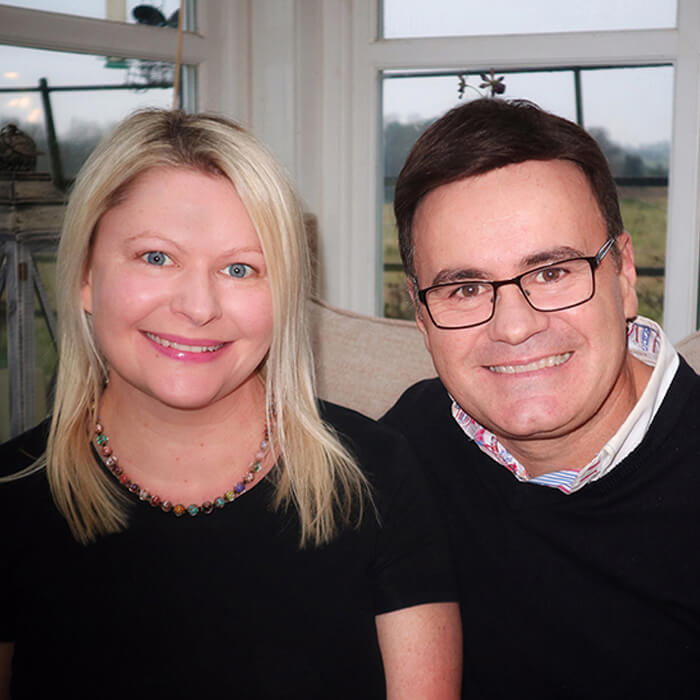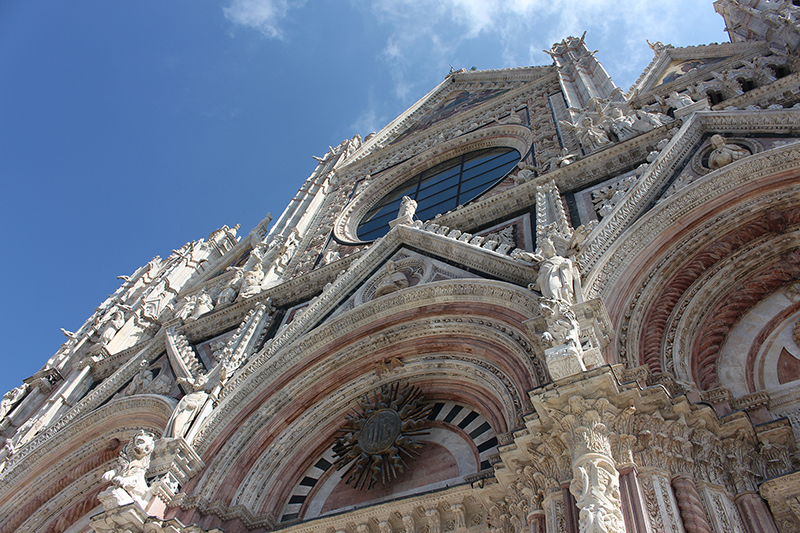
by Guest contributor | Mar 12, 2018 | Europe, Travel blogger destinations, Traveller tales and interviews
Italy is a country which is packed with inescapable beauty, whether you’re flying in for Milan in a day, off on a Tuscan road trip or taking a train around the country.
From the stunning architecture of the Milan Cathedral in the north all the way to quaint beach side towns or Naples and Palermo in the south of the country, Italy is always a good idea.
The sights are beautiful, the traditional cuisine is scrumptious and the weather, especially in the summer months, is warm and lovely.
People come from all over the world to soak in the rich history of Italy’s iconic cities like Rome, Venice or Siena.
Milan is a major European fashion capital, and the beach side cities draw a large crowd of tourists every year.
Every city in Italy, whether it’s in the north or south, has something special to offer visitors and Northern Italy is packed full of unique sights and tourist attractions.
If you’re planning a vacation to Northern Italy, you may be overwhelmed at how much there is to do and see! Hopefully this guide will help.
Following are tips on how to enjoy Milan in a day, as well as five of our top picks for the best of northern Italy.

Milan in a day – visit the Cathedral
Among the many things to do in Milan in a day, visiting the Duomo is certainly the most important and memorable one.
The Duomo di Milano, which translates to the Milan Cathedral is a key monument that attract millions of tourists every year.The original building was constructed in the late 14th century and it took a full six centuries to complete, with construction finally ending in 1965.
However, there have been several renovations since then, with the most recent taking place in 2009.
The Duomo of Milano is the largest church in Italy and the third largest in the world, under only St. Peter’s Basilica in the Vatican City and Basilica of the National Shrine of Our Lady of Aparecida in Brazil.
The architectural style of the church features broad naves, flying buttresses, openwork pinnacles and spires, as well as the highest Gothic archways of any fully completed church.
When visiting the Milan Cathedral make sure to take a trip to the roof, the most amazing sculptures are located there and you will get to admire the entire city from above.
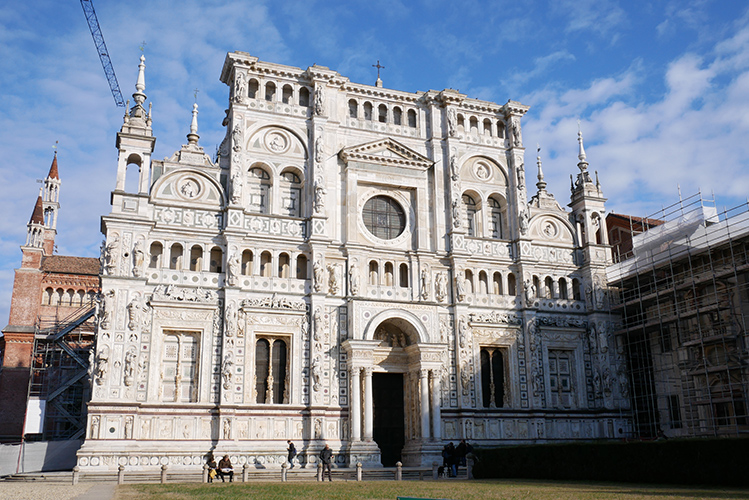
Certosa di Pavia
Another fantastic place located in the Northern Italian region of Lombardy is the Certosa di Pavia – a beautiful monastery with a rich history.
Its construction took 100 years and was finished just before the turn of the 16h century.
“Certosa” is named after a group of Carthusians, who were typically known for their plain architectural style. However, the Certosa di Pavia, ironically, is one of the most exuberant and intricate buildings in Italy.
It has features of both renaissance and gothic architectural styles, evident in the Latin cross path and gothic arches.
The massive building has several paintings done by famous artists, as well as decorative stained glass windows.
If you love architecture and history this is a perfect place for an interesting afternoon.
After visiting the Certosa it is highly recommended to head south and explore the lovely town of Pavia located just 15 minutes away.
Autodromo di Monza
If you aren’t as intrigued by the rich history of old buildings and architecture, there are still plenty of places to visit in Northern Italy- one of which is the Autodromo di Monza.
This historic race track is located to the north of Milan and third purpose-built motor racing circuit to exist in the entire world.
The Autodromo has three tracks and several races take place there annually. For all car and race-track fans, visiting the Autodromo di Monza could be an absolute dream come true.
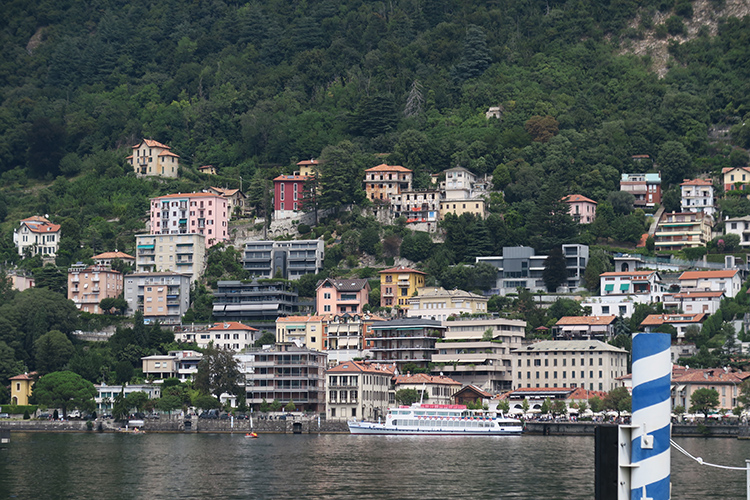
Lake Como
If you ever see any pictures of Italy featuring a crystal blue lake in a valley, surrounded by lush green hills and white-capped mountains, that’s Lake Como.
Set at the base of the Alps, Lake Como is a posh resort area. Located in the Lombardy region, Lake Como is one of the largest and deepest lakes in the country, measuring 146 square kilometers in area and 400 meters in depth.
The lake stretches to meet the cities of Bellagio, Como and Brunate, amongst many others. For those interested in visiting, you can see Lake Como during a day trip or opt to stay in accommodation like lakeside villas.
Get there from Milan – find out more
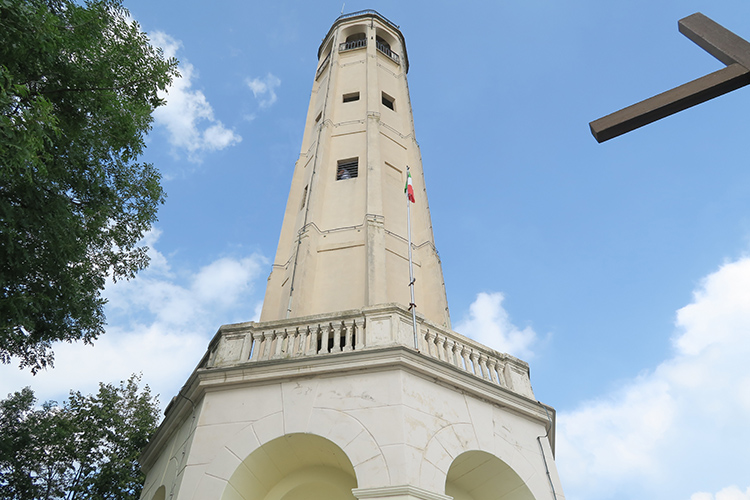
Brunate Lighthouse
The Brunate Lighthouse, also referred to as the Faro Voltiano di Bronate or the Volta Lighthouse, is located in Brunate near Lake Como.
The lighthouse was named after Alessandro Volta, a famous Italian physicist and chemist who made significant contributions to power and electricity.
It was constructed in 1927 on the 100th anniversary of Volta’s death. Brunate Lighthouse stands a whopping 29 meters tall and features a light that flashes red, green and white that can be seen as far as 50 km away. The colors symbolize the invention of the battery, which is said to have been invented by Volta. Though a steep climb, the trip to this large octagonal structure is well worth it.
Sacro Monte di Varallo
A sacro monte is a mountainside building used by Christians to worship Christ. Directly translated as the Sacred Mountain of Varallo, the Sacro Monte di Varallo overlooks the quaint town of Varallo Sesia.
Varallo Sesia has a population of just over 7,000 people and is located in the Northern Italy region of Piedmont.
The Sacro Monte di Varallo grounds are fascinating, as they are surrounded by a garden, several chapels that narrate the life of Christ and many statues and sculptures that do the same. If you are interested in history, religion and culture, you won’t want to miss this place.
About Barbara
Barbara Mazz is the founder of crabintheair.com, a travel blog where she shares her passion for exploring the world. She loves writing about all the hotels visited, the wonderful cities discovered and the unique people met along the way.
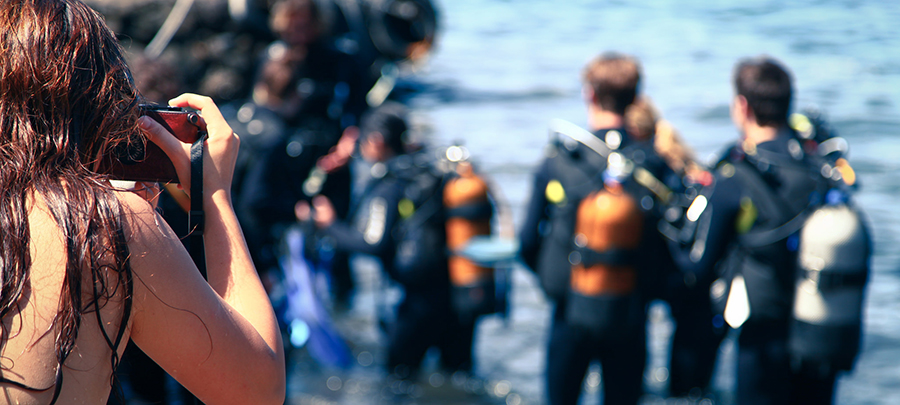
by Guest contributor | Feb 28, 2017 | Cruising and water adventure, Europe, islands, Spring and summer in Europe, Travel blogger destinations, Traveller tales and interviews
We were so excited to head to Santorini, Greece, in May 2017, to discover its beaches and scuba diving Santorini for ourselves. It was our second attempt at the trip, after being delayed from going the previous year (although we did embark on another seaside adventure in the UK instead).
When Alice Ross pitched this piece on beaches and scuba diving in Santorini, of course we said yes! Read her guide before your trip…
~
Recreational scuba diving was restricted in Greece for a long time. The government did it to prevent antiquities smugglers – diving was allowed to only some people who were given special authorisation by the authorities determined to protect the country’s marine life and remains of archaeological importance.
Fortunately, in 2004, authorities lifted the restrictions and anyone who wants to scuba dive just about anywhere in the country is allowed to do it for recreation.
Since then, Greece has quickly become one of the most visited scuba diving sites in the world. With more than 4,000 islands and 12,000 miles of coastline, the Greek seas offer an ideal place for scuba diving.
Guide to beaches and scuba diving Santorini
One of the best places to do scuba diving is in Santorini. The marine life that you can find the coast of Santorini is arguably well-known. The island’s waters, formed by a volcanic eruption that took place in the 16th century, are rich with mineral, supporting a solid range of coral and creatures.
These great volcanic eruptions have formed wonderful underwater backdrop giving scuba divers ceaseless options for wall dives and unending stops all over the volcanic islets and the caldera.
Aside from the beautiful underwater world Santorini offers, the water visibility all over the island is good! The water temperature is approximately 22°C, so make sure to wear some nice wetsuit.
Diving in the vicinity of the caldera is also possible; however, the southern side of the island is the one that offers a variety of delightful caves which you are able to explore with the help of a master diver who is familiar with the site.
If you are interested in visiting Santorini for diving, this list of four beaches where you can scuba dive is worth checking out.
Perissa Beach
…Is a very famous beach resort that should be top of your list.
It’s an organised, developed beach with a plenty of comfortable beach chairs, umbrellas, as well as other amenities, such as lifeguards, playground, and of course a shower. It’s worth mentioning that it was awarded Blue Flag award for being organised and clean.
When you reach the end of the beach is where you will find the diving spot. There are also two diving centres you can check out on this beach. Aside from that, however, you are able to pick from different water sports like windsurfing jet skiing, kayaking, and parasailing. Lastly, a wonderful water park with pools offers and water slides that cater to anyone of any age.
Perivolos Beach
…is a long, black sand beach with beautiful deep blue waters which is connected to and Agios Georgios Beach and Perissa Beach.
It’s another well-organised beach with sunbeds, lifeguards, umbrellas, taverns, restaurants, cafes, supermarkets, bars, showers, a playground, and public toilets.
There are many beach bars playing club the latest music, DJ guest during the weekend, volleyball tournaments, and exciting events on special occasion. But of course, this is also a nice place to go if you are looking for some underwater (or even over the surface) adventures!
Agios Georgios
Located less than one kilometre from Perivolos Beach, Agios is a big, sandy organised beach.
It’s more peaceful than its neighbouring beaches, and the water is shallower.
Some small taverns offer delicious lunch. Umbrellas and sun beds can be rented if you want to relax at the beach, and there are a lot of opportunities for water sports like scuba diving.
Divers can explore the beauty of Santorini’s marine life under the supervision of master divers who prioritise safety. The locations for dives might be very local in the bay and all over the neighbouring headland cliffs or a little further afield, depending on water visibility and conditions.
Ammoudi Bay Beach
This beach is accessible by walking or riding ride down the 214 steps from the castle of Oia.
Amoudi Bay is well-known for its traditional Greek inns with fresh seafood and the astounding romantic sunsets. Once Santorini’s commercial port, Amoudi Bay has now become a tourist spot. There might not be sunbathing comforts at this beach unlike the other ones mentioned above, but the diving scene here is impeccable. Diving here is something you wouldn’t definitely find anywhere else in the world.
Santorini isn’t only about sunsets, beautiful landscapes, and majestic geometric houses in the villages.
If you take your time to explore deeper, you will have the chance to experience an amazing adventure in Santorini. If you have not experienced diving before but you’re interested, you don’t have anything to be worried about as most dive shops in Santorini offer a non-certified scuba diving course where you’ll have to engage in a brief scuba diving introductory lesson before diving down to a depth of maximum 6 to 7 feet.
You may also be interested in our Santorini travel guide, and our Athens city feature.
Featured image by THINK Global School
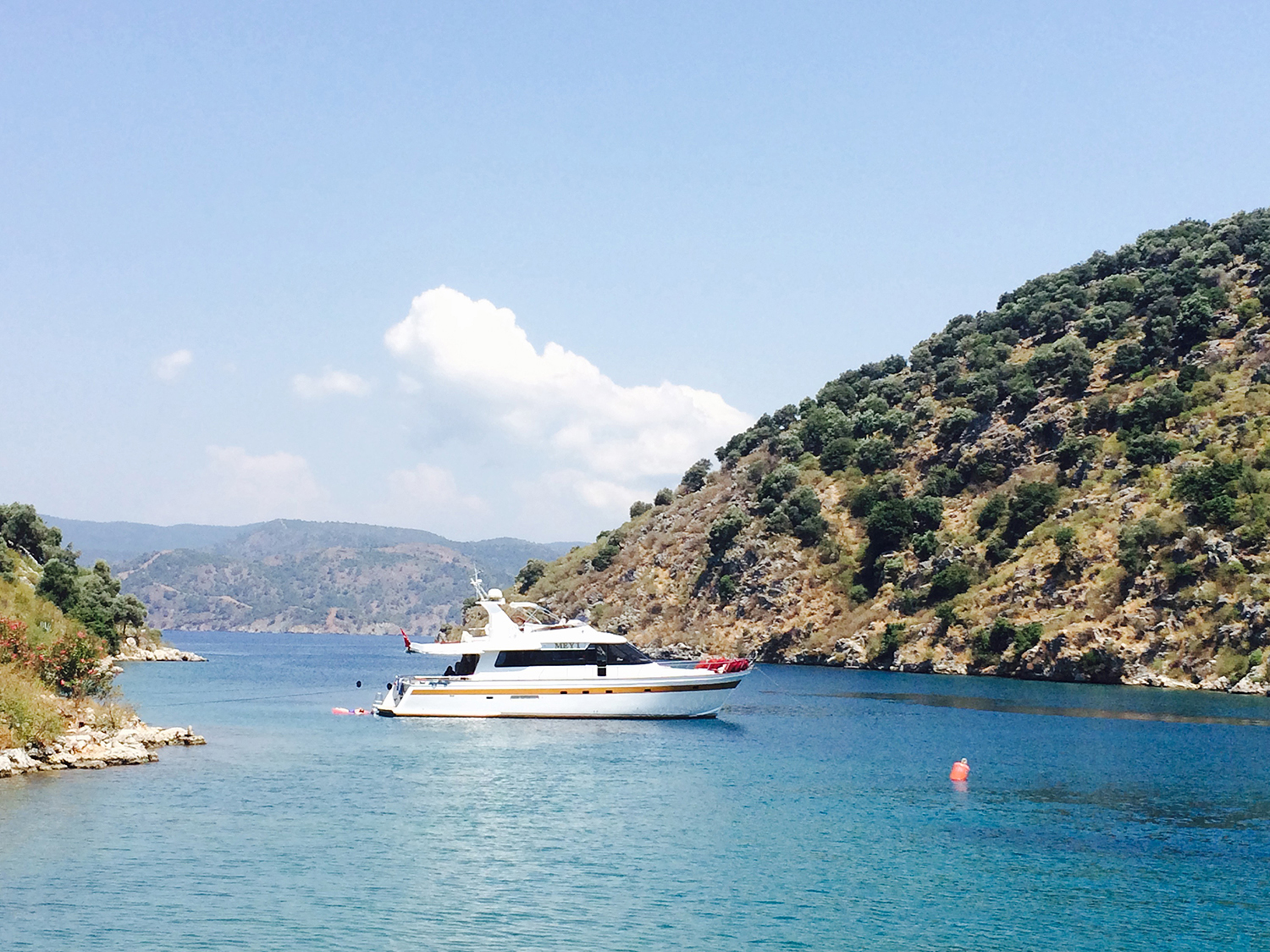
by Sarah & Cooper | Mar 7, 2016 | Europe, Travel blogger destinations, Travel for health and wellbeing, Travel guides, Traveller tales and interviews
Flavia Munn is a London-based health journalist and yoga teacher, and friend of travellivelearn.com. Last year she sought affordable Yoga retreats and found her self on an adventure to Turkey.
If you’ve ever thought of combining international travel with the chance to further your creative or spiritual interests, then read on for Flavia’s best tips and details on why you need to do a yoga retreat in Turkey…
When did you travel?
During May (2015) for seven days.
Affordable Yoga retreats: why Turkey?
Life had been really busy and I knew from past experience that this kind of break away was exactly what I needed to reset and relax.
Most people probably decide on a holiday based on destinations they want to visit, but with yoga retreats I think it’s fair to say many students base the destination decision on what kind of yoga they want to practice and with which teacher.
I booked my trip through Free Spirit Yoga because I had heard many good things about the company. I made my final decision based on the description of the teachers who I carefully cyber-stalked (‘researched’) beforehand.
The teachers were Zoe Martin and Gary Ward, of Yoga Leicester who are inspired by the teachings of the legendary T. Krishnamacharya and his son T.K.V Desikachar.
They also brought their very sweet baby daughter along, who entertained everyone at mealtimes! I liked the description of Gary and Zoe’s yoga on the Free Spirit and their own website, particularly their emphasis on yoga’s therapeutic qualities and working with movement, breath and sound. I thought they looked like kind, friendly people – a warm smile can be a deal-clincher when deciding who to spend a retreat with, particularly when travelling alone. I also liked the idea of having two different but complementary teachers.
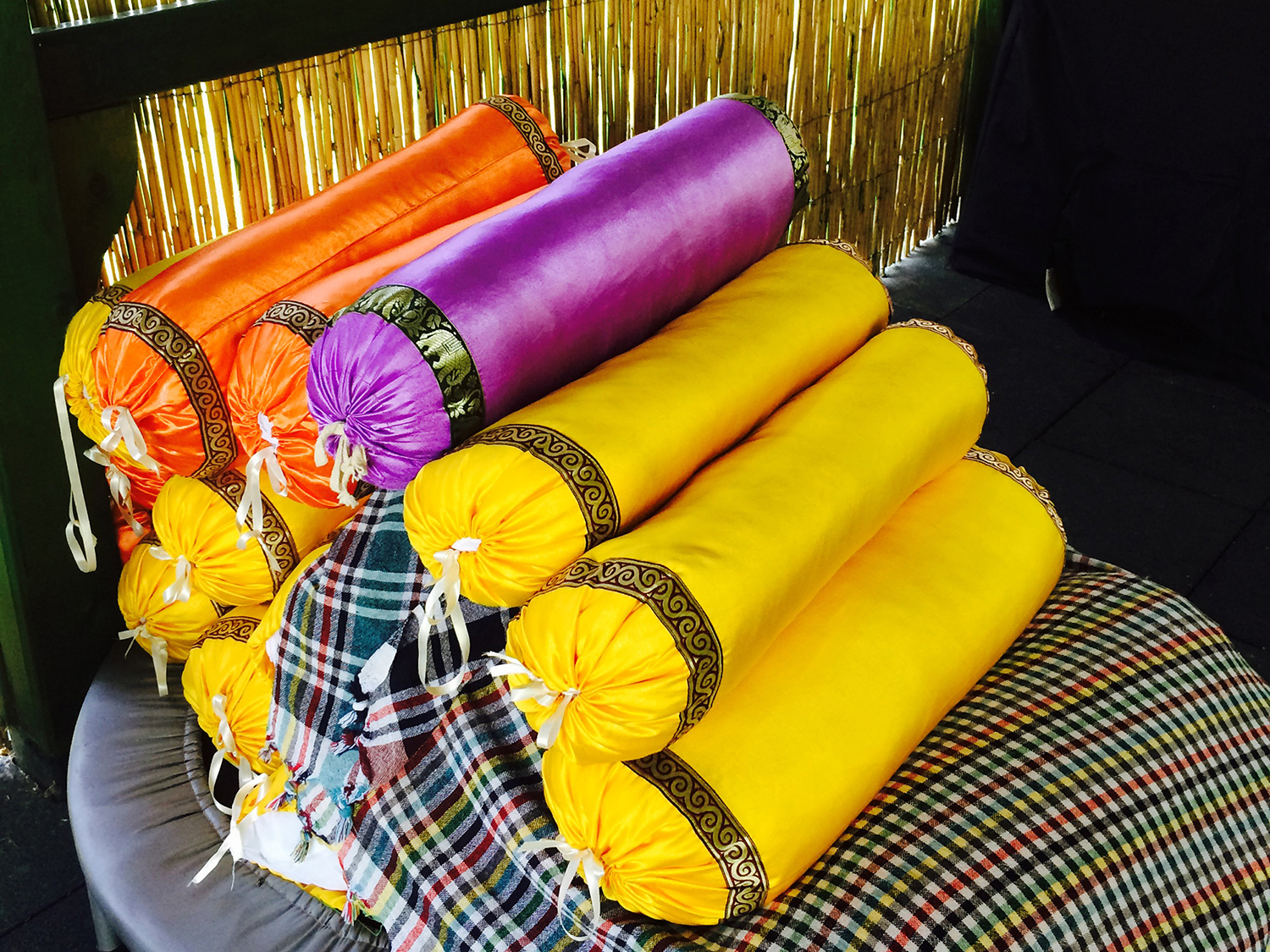
Where exactly did you go?
The retreat was based at Grenadine in Dalyan, about an hour or so drive from Dalaman airport (about a four-hour flight from London Stansted).
Grenadine Lodge is situated on the outskirts of the small town of Dalyan and within a conservation area. Photos simply do not do the location justice. It really is peace and paradise on earth! Imagine waking up to the sounds of nature (OK, sometimes the birds were interspersed with a dog barking but not an aggressive one). Then you wander across the dewy lawn to one of the two yoga shalas (or huts) for an hour and a half’s yoga – a more energetic style taught by Gary in the morning – before a traditional sweet and savoury Turkish breakfast, eaten beside the pool which is the focal point of the garden.
Next up is the highly stressful decision of what to do with the rest of the day – a lounge beside the pool ordering fresh salads, ice creams and juices; or a 15 to 20 minute walk into town to the shops and market and where you can catch a river boat to the Iztutu turtle beach. Or you could have a hamman, a traditional Turkish bath, which includes a good scrubbing.
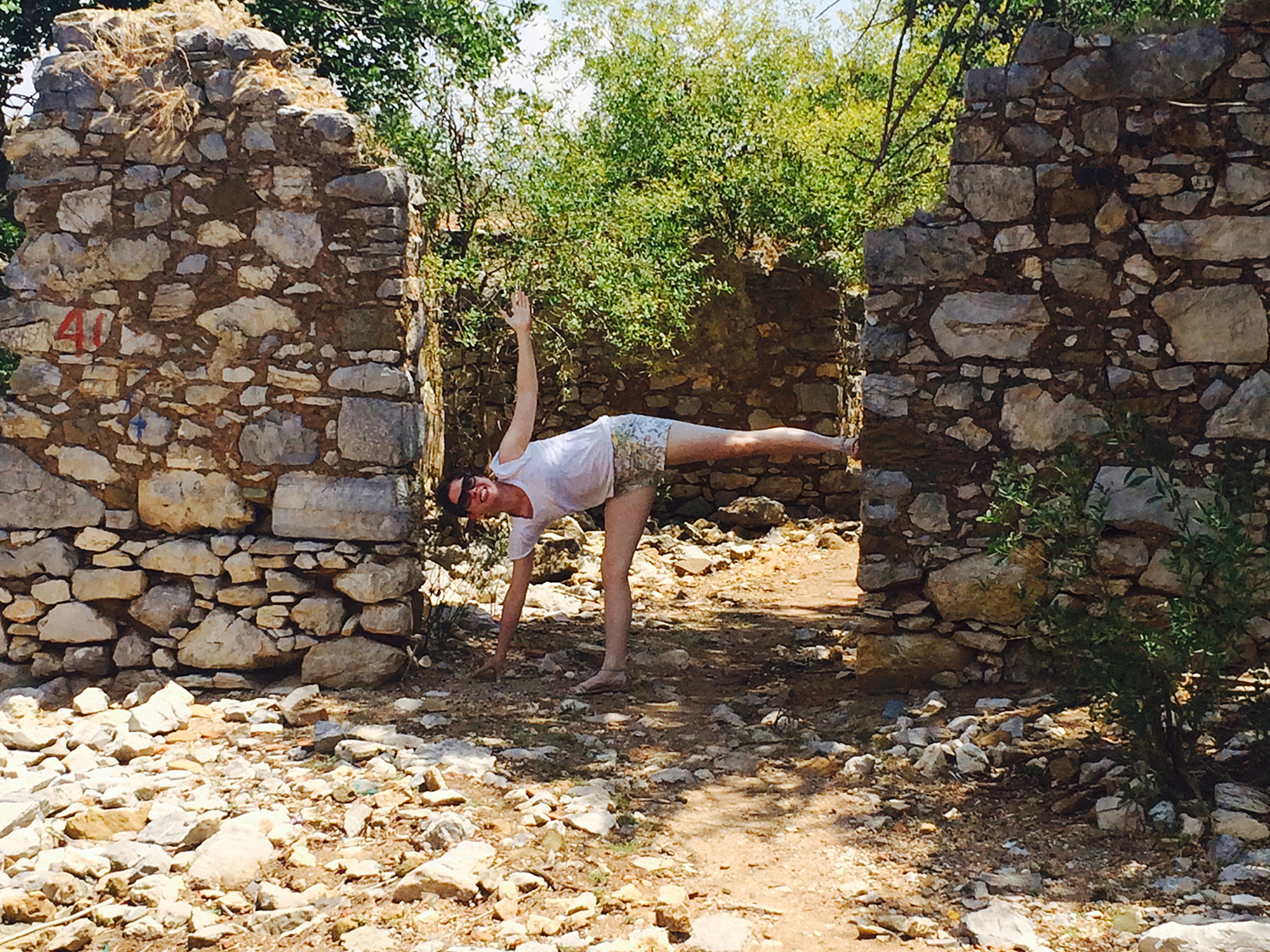
For those who have never been to a yoga retreat before, what’s on the itinerary?
How much yoga you do on a retreat is entirely up to you. Don’t feel you can’t come as you don’t think you’ll be able to do two classes a day (which can mean three or four hours of yoga a day).
The yoga is at both ends of the day – before breakfast and before dinner. Gary’s morning class was energetic while Zoe’s evening one was soulful. They both were on the same theme of that day, based on the chakra system. The body’s seven chakras – or energy centres – is a common and effective theme for retreats.
How you spend the time in between is entirely up to you. There are many options for group trips, be that to a hamman bath or the twelve island boat trip, or a massage or other holistic treatments in the solitude of Grenadine Lodge (all very reasonably priced).
Want more on wellbeing travel? You might like to read about how to book a wellness or creative retreat🧘♀️

Personal highlights from this retreat?
The location was divine and the entire group was friendly and funny. In fact, I spent many times laughing to tears! More seriously, it was an incredibly supportive environment and while Zoe and Gary were also on hand for anyone who needed to talk, the amazing staff at Grenadine would literally sort out anything you desired.
The yoga, of course too. It was a different approach for me and I loved it.
The twelve islands boat trip was stunning. We had a boat to ourselves and we could jump into the sea for a cooling swim, and had delicious barbecued food on board.
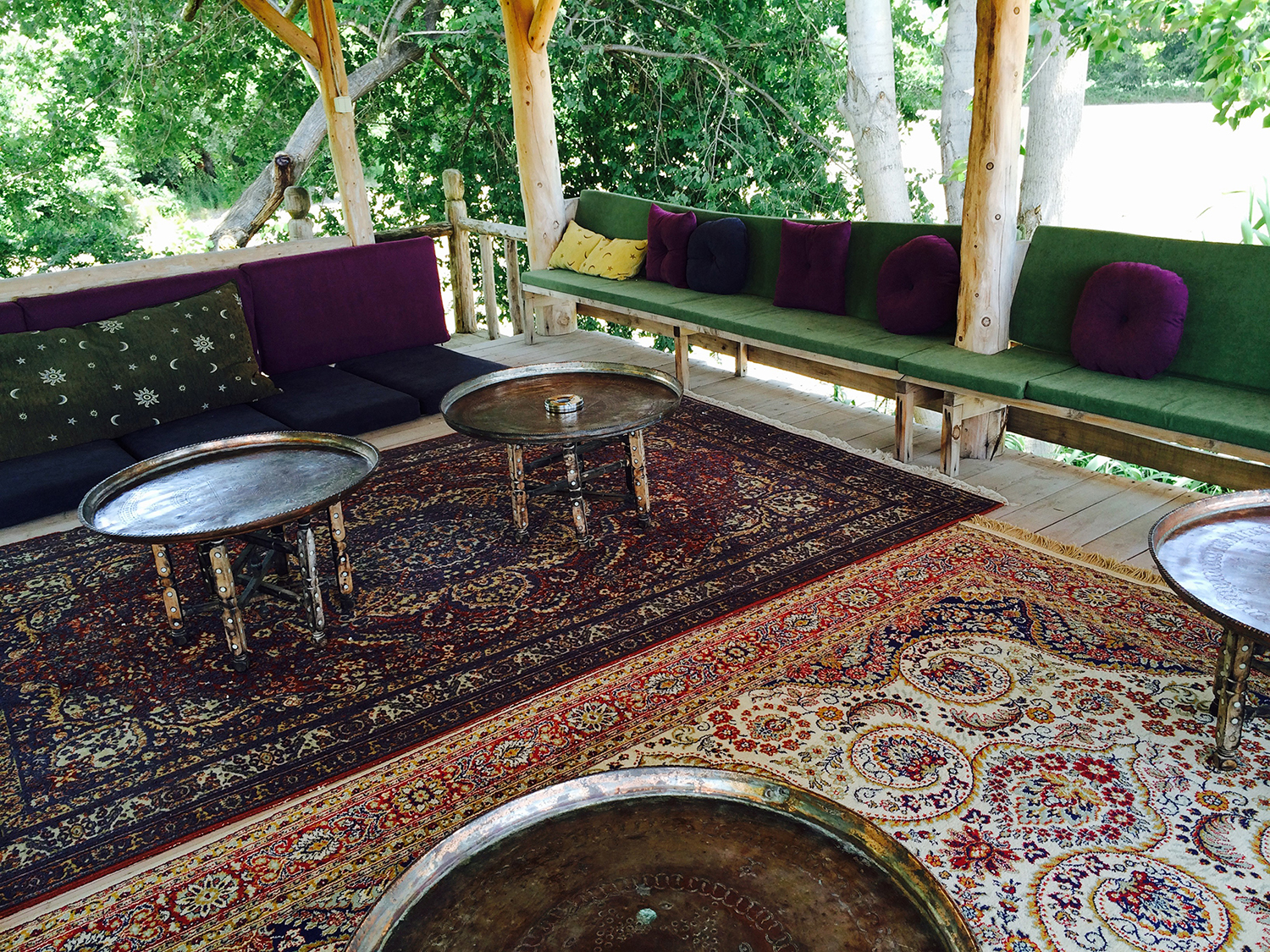
One big lesson you came away with from this particular trip?
Suspend your judgement. I was a bit uncertain when I saw most of the group were of quite different ages to me and many knew each other from Leicester, but I put that aside and I was right to do so as they were so much fun and incredibly welcoming, warm people.
How many retreats have you been on?
This was my third yoga retreat. Previously, I’ve booked through Yogatraveller and have been to Morocco and Gozo (Malta) with them. I chose the first trip to Gozo based on their website and emails I’d exchanged with Michael Moroney, who runs the business with his yoga teacher wife Michelle. He was very helpful and put at rest any apprehension about travelling alone.
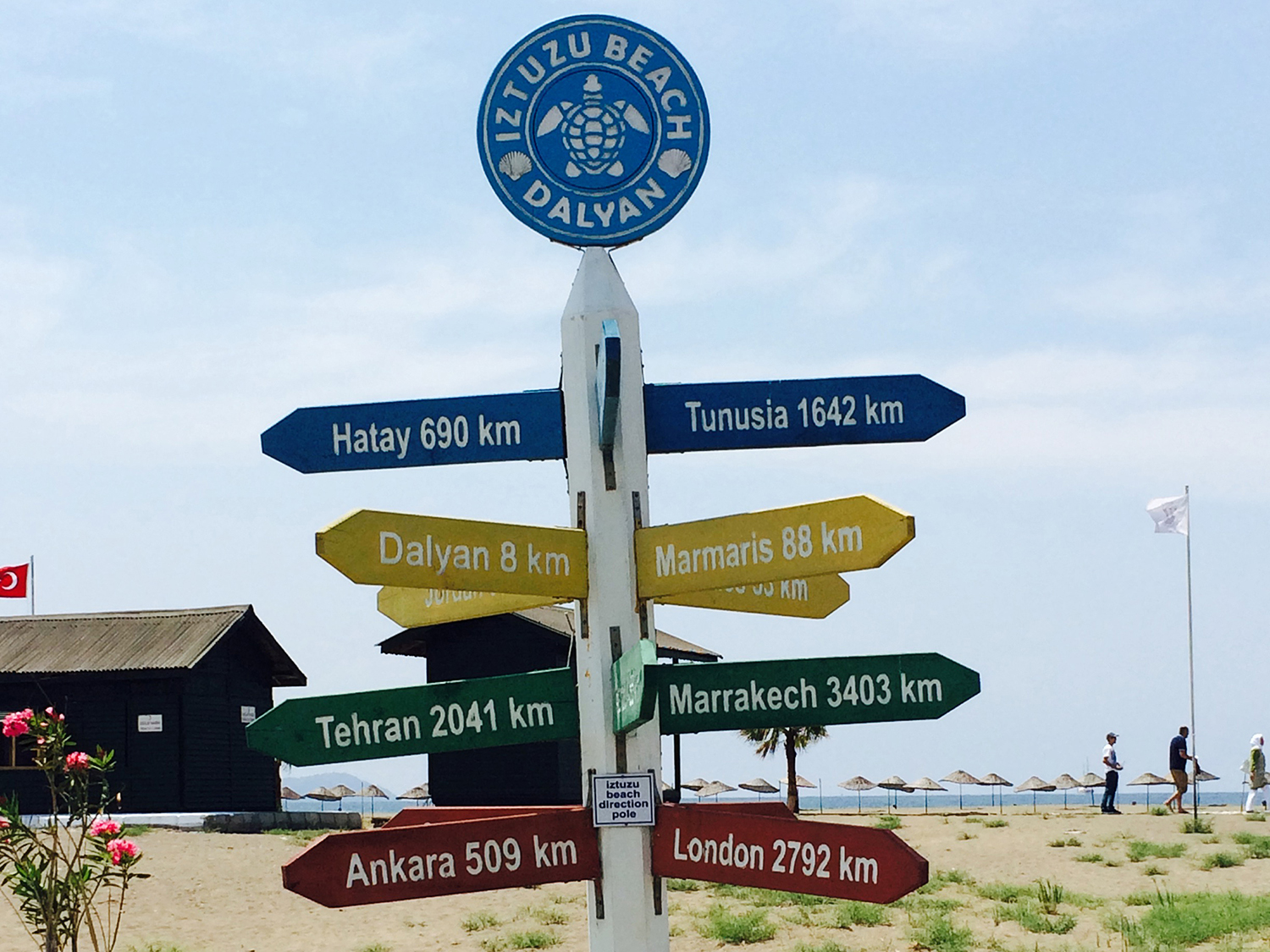
What tips do you have for people who are interested in seeking creative, yoga and/or meditative experiences around the world?
Do your research and ask questions – this gives you an idea of the kind of people who run the retreat and whether it’s for you or not.
I’ve recently booked two retreat centres in India based solely on Tripadvisor and other review sites, and my email exchanges with the teachers who run them.
As a yoga teacher, why do you think retreats are a good idea?
They give you a chance to try something different. I never go on a retreat with a teacher I already practice at home with – no offence to them but I like to use retreats to try a different teacher and approach.
Retreats give you the time and space to explore your practice, learn and develop in a supportive, relaxed environment. I’d attend a retreat three or four times a year if I could (work and finances permitting).
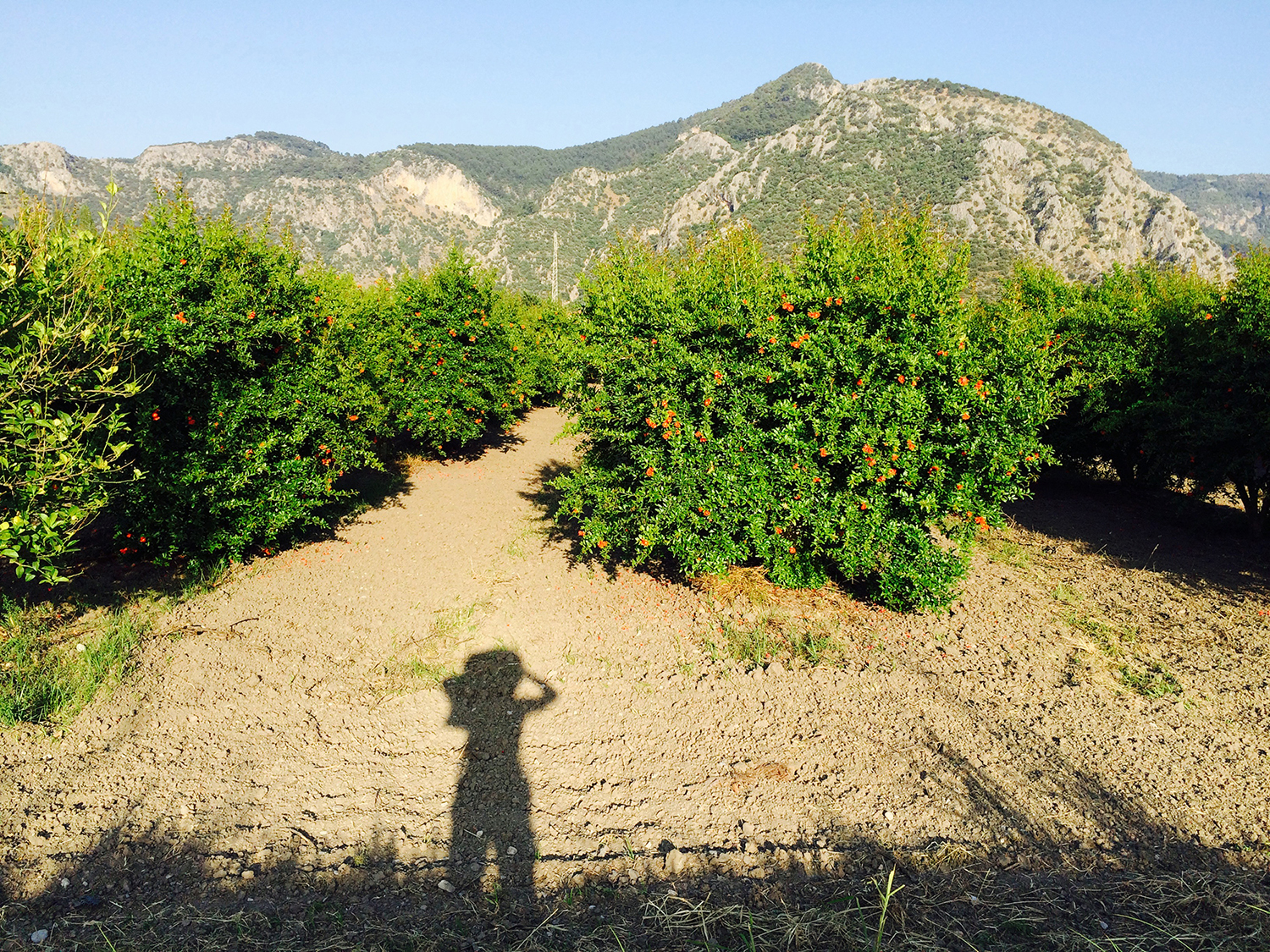
Top three essential items required for a trip to Turkey?
Mosquito repellent, sun cream and a good camera.
What’s next on the travel bucket-list for Flavia Munn?
At the end of March I’m off to southern India for six weeks. I’m very excited about this! It will include two yoga retreats – one in Goa and another in Kerala. In between these, I’ll be cycling around the region including stopping a couple of days in Mysore, which is the yoga capital of India and the home of ashtanga which was taught by Sri Pattabhis Jois until his death in 2009.
I’ll be writing about my experiences on my website flaviamunn.com – do check it out and let me know what you think!
Your advice for a first-timer who is keen to try a yoga retreat but tentative because they feel inexperienced?
Just go for it! You won’t regret it. You will only wish you had done it sooner. I’ve only ever met lovely, friendly people on retreats and had truly amazing life-changing experiences.
Would you recommend this experience in Turkey, and why?
Definitely! The yoga was suitable for all – those with no experience, plenty still for the more experienced and a safe and supportive environment for people looking personal development or healing.
Where can we find you online?
My website and blog is flaviamunn.com and I’m @flavers on Twitter.
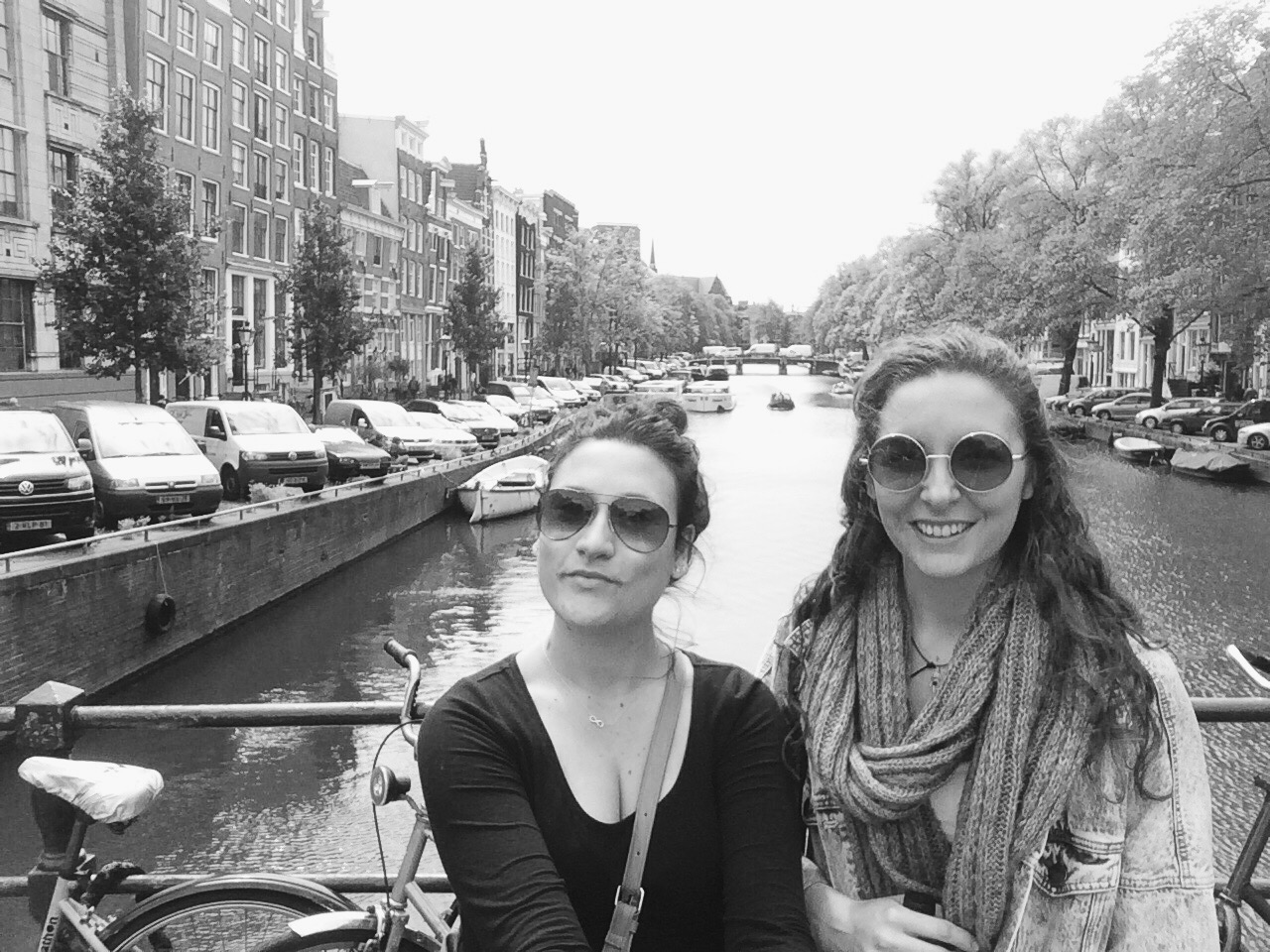
by Sarah Blinco | Feb 14, 2016 | Europe, Travel blogger destinations, Traveller tales and interviews, United Kingdom
Last year, 21-year-old Jordan Lea Hart, embarked on a once-in-her-young-lifetime trip abroad. While she’d enjoyed a holiday or two closer to home and with family, this was her first significant trip overseas – just she and her best friend, Rachael. We’d spoken to the girls a few times about travel and life abroad, and were very excited to hear when they took the massive step to book and confirm it all.
Jordan Lea and Rachael enjoyed the same tour of Europe with Expat Explore that we did in 2011 (on just the second 26-day itinerary since the group launched it), and I was keen to find out more about the experience, their tips and stories of travel and friendship. Most importantly, I was keen for insights into why they too, advocate taking the chance to travel, live and learn!
When did you travel to Europe?
In July and August 2015, European summer time.
This was your first major overseas trip – how did the decision come about to do it?
Throughout high school, my best friend and I always talked about travelling to Europe, specifically London, because we love historical buildings and English boys! Once we finally had enough coin we booked it.
When did you decide what type of travel option to pursue?
I wanted to do a coach tour as it just seemed like the most cost-effective way to get a taste of each country. Originally the plan was to go on a month tour, then rent a car and road trip around Ireland, Scotland and Wales, however that didn’t end up on the agenda due to work and study commitments.
We decided on Expat Explore’s 26 Day Ultimate Europe Tour because it is great value for money (even considering the conversion from Aussie dollars).
One of the first things our tour guide, Will, said was, “You guys are travellers, not tourists, we are not going to hold your hand everywhere you go, it’s up to you. YOU create your journey, we just guide.”
It was awesome because that’s exactly what he did – told us the way to our hotel, how to get home, and what time we would be leaving for the next trip. We never considered a party-type tour, we really wanted to make the most of our travels, not spend the time in bars 24/7 and hung-over every day! Not to say we didn’t have a few cheeky drinks.
Was there anything you were worried about prior to taking this big trip so far away from home?
I was worried about missing home too much; I was in a brand new relationship so this trip was a massive test on us. I missed him terribly but we survived it, thank God for Viber.
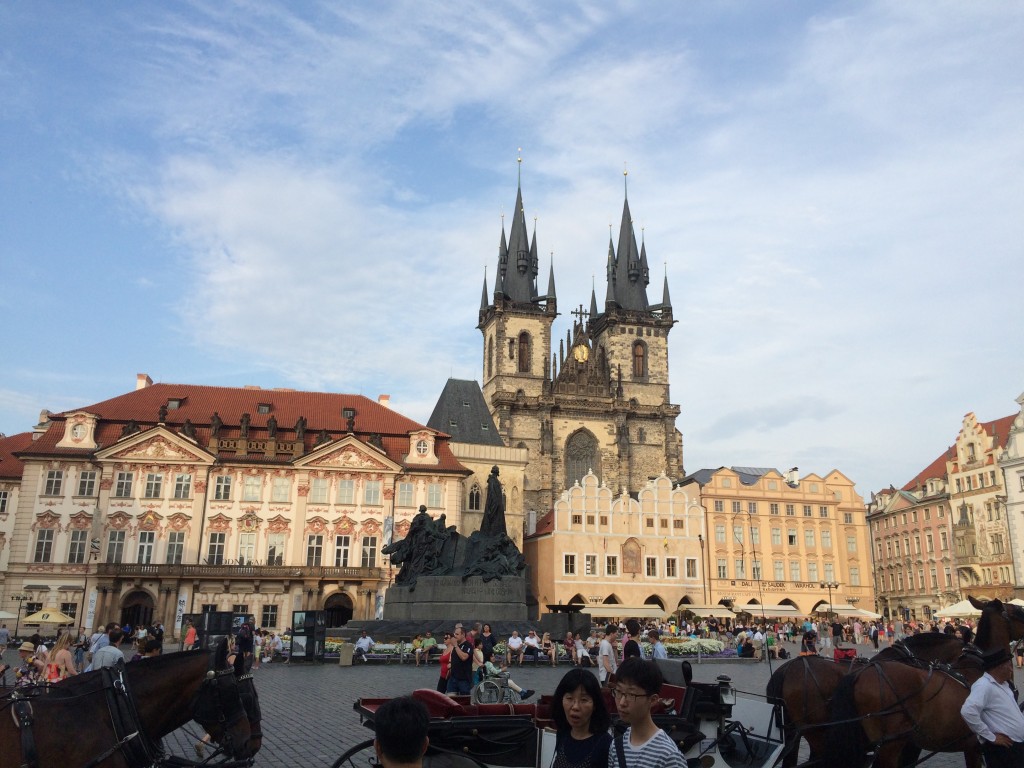
Do you think you were well prepared for the trip, or did you learn along the way?
Prior to us leaving I quit my job! I was treating this trip as a fresh start for me, to get perspective on what I really want. I had to be very careful with my money, budgeted a lot, made trips to the local supermarkets to get fresh fruit and snacks for the long coach journeys.
Clothing was something I was not prepared for. I was under the impression Europe would have cold days, and I would only need so many shoes or pairs of socks. The little things ran out fast, and I packed about 10 jumpers and no summer clothes. That was a massive wake-up and I spent a lot of money buying summer basics (most of Europe is hot in summer!). But I learned little tricks after a few weeks, like washing delicates in the sink then rolling them up in the bathroom mat so they dried a lot faster.
I also thought this would be a great best friend trip, just myself and Rachael the whole time! But we met some lifelong friends, we created ‘the squad’ after two days on tour – myself, Rachael and three rowdy British girls – we were inseparable.
What were three highlights of Europe?
The whole trip was a highlight but I do recall a few special moments.
Our first stop was Amsterdam, and Expat scheduled an optional activity for day one on the road. Everyone else on the bus went except Rachael and I; We ditched it. Woke up late, caught the train into the city centre, wandered around just taking it all in for six hours. We walked away from all the tourist areas and went local. We found all these amazing hidden cafes and lunch hot-spots. It was beautiful and so peaceful to just wander and soak up all the culture. Once we got back to tourist-central, we naturally tested the devil’s lettuce from the local coffee shop (not to be confused with cafe) and ended up having the wildest night of our lives.
Sneaking into random hotels, running along the canals and eating the best yogurt and fruit anyone could ever have – our first day was done right.
The second highlight for me was meeting the squad, Alice, Anya and Sara. Here are five girls with completely different backgrounds and we clicked instantly as if we were long-lost soul-mates. We had one night in the Rhine Valley where we all had too much wine, ended up smashing karaoke with a Spice Girls comeback, and we were almost as good as the real thing. So many nights were unforgettable with these girls!
Barcelona was an absolute highlight for me personally; the culture of that place blows my mind! Oh and the sangria!
The last highlight, even though bitter-sweet, was our final night of the tour in France, sitting under the Eiffel Tower and its 9pm light show, drinking mini bottles of wine, with our cheese dips and chocolate.
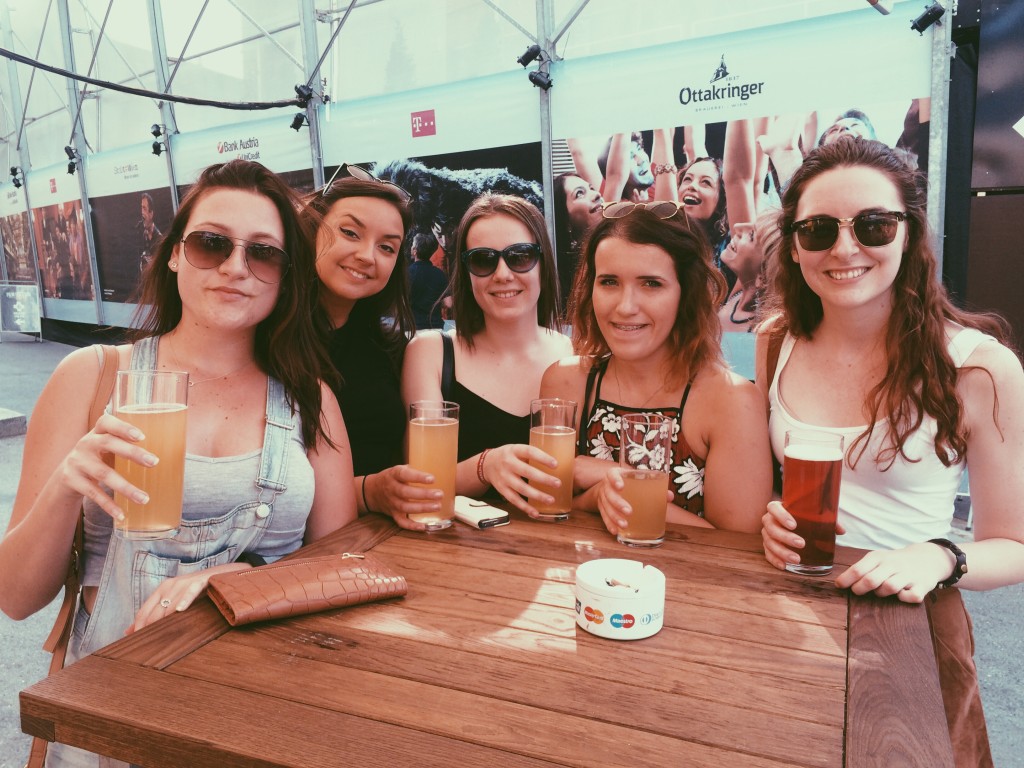
Some England highlights?
The UK was a short but sweet stay, four days in total, but so full of life. We went to the markets, Harry Potter studio tour and stayed walking-distance from Oxford Street. Also spent a night drinking cocktails with some of my favourite people. It was the perfect end to our trip.
What did you learn about yourself through this experience?
That if I set a goal to do something it will be achieved. And, that I can successfully catch public transport in any country! It helped me also appreciate how lucky I am to have had the chance to do this at 21. Most people don’t get that chance, even couples on our tour said this was their first holiday overseas and they were well over 50.
How has such a significant travel experience shaped the way you are now planning for your future?
It only makes me want to plan for more! I have the thirst for travel, the way it opens your eyes is something else. The world is a fascinating place.
What’s your advice for anyone planning to travel or tour Europe in the summer?
You need a reliable water bottle, sunscreen and good walking shoes.
Be warned of the crowds in Italy, it will have you feeling like you’re suffocating, so go see all the major sights in the afternoon, because in summer the sun doesn’t set until 9pm so it’s nowhere near as hot then.
Learn the underground in European cities. Local trains usually work like clockwork and will take you anywhere you need to go. It all works in colour lines so don’t worry about not knowing the language if you need to get around.
In France, buy souvenirs from the salespeople on the street, not stalls; the sellers are lovely and you get the same thing but for half the price!
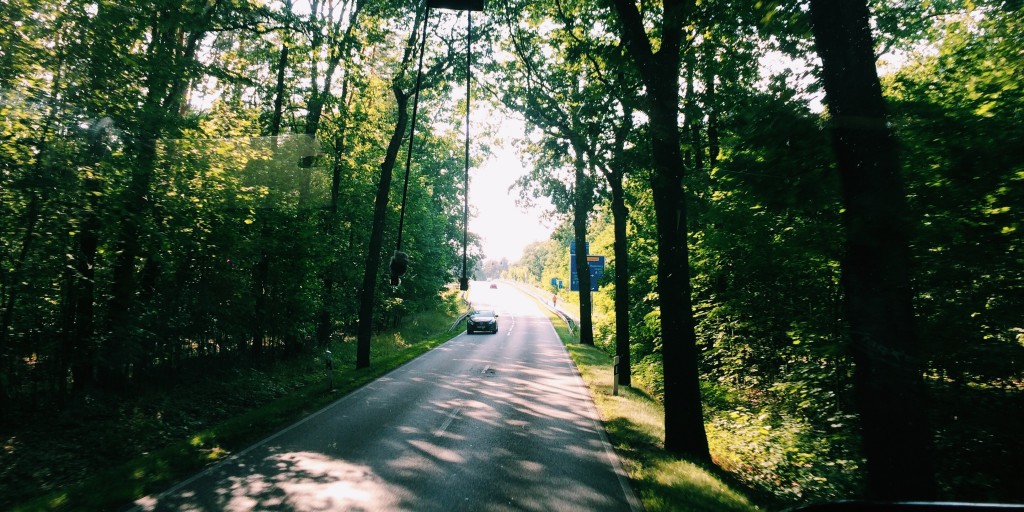
What are your essential travel planning websites and apps?
In Europe, always search for the city metro map and have a screen copy on your phone for reference. In London, download the app Kabbie. I would have been lost without this – it’s like Uber but cheap. Another helpful tip is to buy your food and alcohol for your trip. This saves you so much money; the supermarkets have everything you could ever need! Don’t get stuck buying supplies at expensive bars or corner stores.
Would you recommend a tour and why?
Yes! Especially if you have never travelled to that country before, it helps you get your bearings and you have a whole coach support system; a tour guide who you can bother with a thousand questions as they know all the good spots, and you meet amazing people. Once you have done a tour, you can go back the places you enjoyed and you’ll already have knowledge to get around like (nearly) a local!
What does travel mean to you now?
A world of opportunities! I have found what I want to do: work, save, travel.
Follow Jordan-Lea’s adventures on Instagram
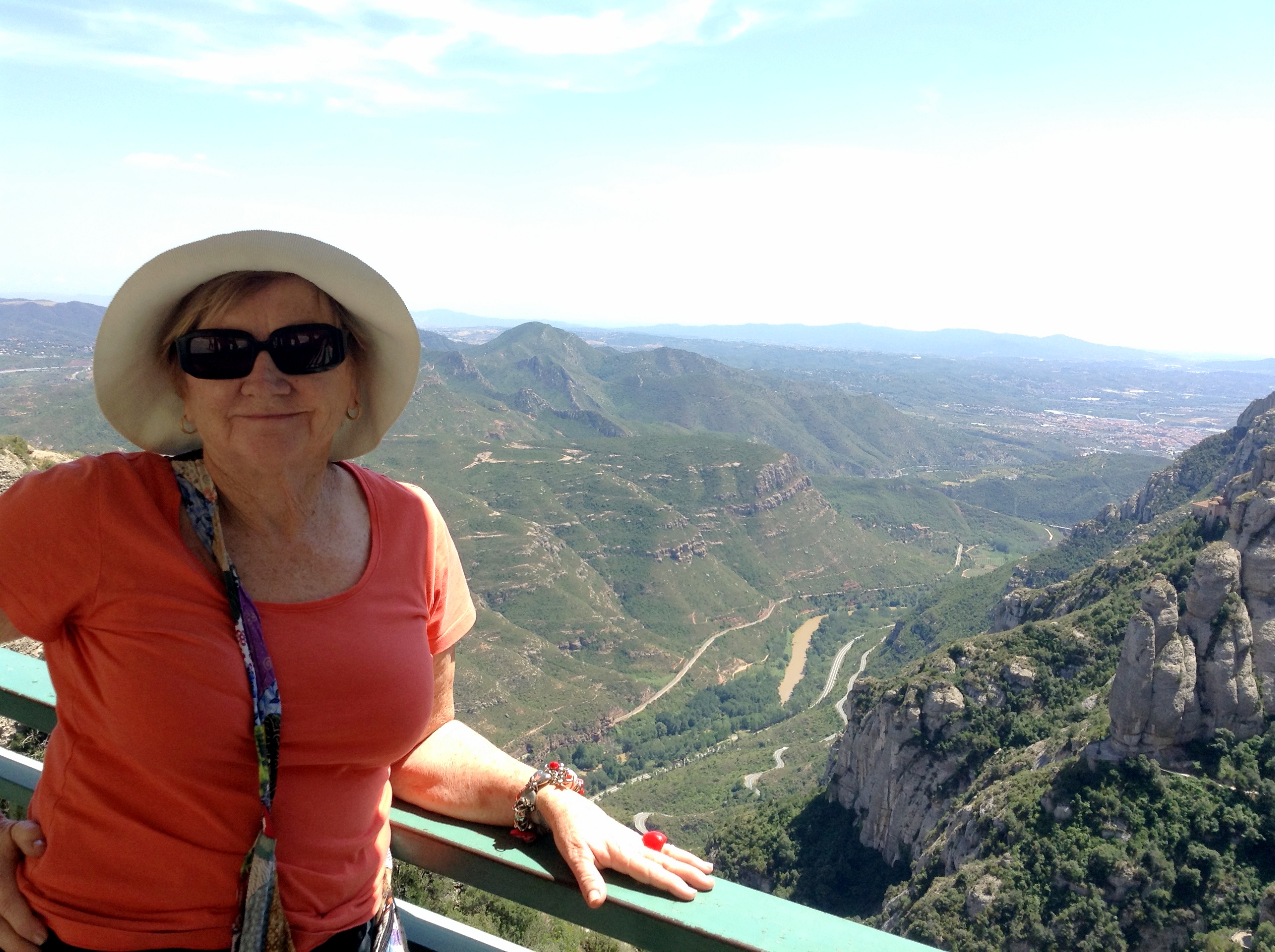
by Sarah & Cooper | Feb 7, 2016 | Being a digital nomad and working abroad, Creative travel experiences, Lifestyle, Travel blogger destinations, Traveller tales and interviews
Lorraine Dawson decided to learn Spanish a few years ago, after harbouring a desire to do so for many years, but simply never having enough time to begin.
She didn’t let living on the Gold Coast in Australia deter her, and went about finding classes and tutors who could enlighten her on how to learn a language at any age.
Last year Lorraine finally had the chance to put her skills to the test on a visit to Barcelona.
We think she is a wonderful example of someone who overcame fears and challenges of learning a new language, particularly as a mature student, so we have asked her some questions on how she did it, what she’s up to now and her advice for others who might like to try…
How to learn a language at any age
Why did you choose Spanish as the language to learn?
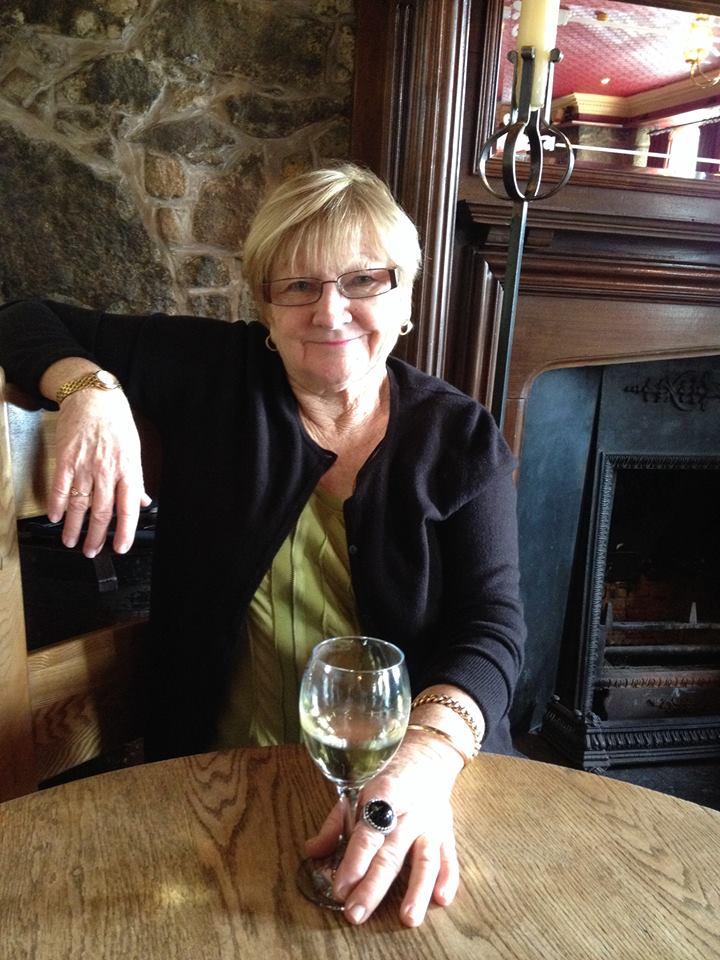 Four years ago (2012), after being retired for six years, and at the age of sixty eight, I looked up the U3A (University of the Third Age) website to see what courses were on offer, and to my delight, ‘Learning Spanish’ was one of them, so I decided to enrol.
Four years ago (2012), after being retired for six years, and at the age of sixty eight, I looked up the U3A (University of the Third Age) website to see what courses were on offer, and to my delight, ‘Learning Spanish’ was one of them, so I decided to enrol.
I had been misinformed about Spanish being the easiest language to learn, which is why I chose it! I actually never had any specific language in mind.
When did you start studying?
When I turned 68 I decided it was time to stop procrastinating and enrol. Signing on for my first Spanish course was an achievement in itself. To say I was a little nervous and anxious would be an understatement.
Our teacher was a Spanish-speaking lady called Trinidad, who comes from the Canary Islands. There were about fifteen people in the class, twelve of whom had already been studying for a year or two, and some already knew another language, apart from English. There were three of us who were beginners.
I would be lying if I said I found it easy to start with. We had typed sheets from which we worked, and at first I didn’t know where I was. For the first year I felt embarrassed that I could not answer the questions or translate the reading, which was in Spanish.
This was compounded by the fact that except for the beginners, everybody else could. I realise I had unrealistic expectations about how quickly I might grasp the language, but that is how it was. It was hard. One of the ladies who started with me dropped out after a few weeks, and the other one dropped out of the class after the first year.
Can you explain a little about the steps you’ve taken through the process of learning Spanish?
I went for one hour a week, and we did not go in the school holidays. We had homework. The first year was the hardest.
The second year was better. Our teacher went overseas for four months, and did not continue teaching at U3A. She decided to teach the class at her home, and we were separated into an intermediate class, of which there were three of us, and an advanced class.
The two ladies in my class have sons who live in Spain, and had married Spanish girls, so they decided to learn Spanish to be able to converse with their daughter-in-law and their families.
I progressed much better in the second year.
Once we were separated into an intermediate class where there were just the three of us, I felt more comfortable being with people who were on a similar level to me in the learning process.
Almost all of the people in the two classes were retired school teachers, whereas I had left school at fifteen. I would forget what a “conjunction” was, but I just asked to be told again, whereas the retired teachers didn’t forget these sort of things.

What did you gain out of actually having the chance to be immersed in the language in Barcelona in 2015?
I went to Spain with my son for five days and I made sure every day that I was there that I spoke Spanish as much as I possibly could, even if it was just asking for a cup of te con leche, por favor (tea with milk please). It was such fun.
When I arrived at the hotel, I informed the staff on reception that I was learning Spanish, and that I would be attempting to speak to them in their language, and would they please correct me when I was wrong.
They found this quite amusing, and were happy to oblige. My son was impressed with how well I was doing in learning Spanish. Being amongst the Spanish people inspired me to want express myself in their language while I was there, and I found they really appreciated the fact I was making the effort.
I won’t insult your intelligence by saying it is easy to learn a language at any age or at my age, but I have gained so much from trying. I have made it a personal challenge.
I keep telling myself, “You can do this, I AM doing this, and I will not let it get the better of me.” I am most determined about it. You don’t always remember what you have learnt, but that is OK, other people don’t either.
What are your best tips on how to learn a language at any age, for anyone keen to get started this year?
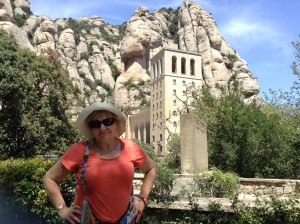 I would highly recommend to anyone considering learning a second language, to go for it. It really gives you quite a boost when you see that you are capable of doing it.
I would highly recommend to anyone considering learning a second language, to go for it. It really gives you quite a boost when you see that you are capable of doing it.
Don’t worry if it seems hard and you think you will never get it. It does get easier with time! If you are a senior like me, I am sure it helps with your memory, and what an achievement that you are getting out of your comfort zone and trying something new. Just do it.
What do you think you personally have gained from pursuing the learning of a language, despite not travelling all the time?
I have made wonderful friends from the people in my class, especially my Spanish teacher, who now teaches me how to cook Spanish dishes, and always brings to dinner a bottle of Sangria which she has made.
The class have had social outings to restaurants where Spanish is spoken, and we have people from Spanish speaking countries come to our class to converse with us. I find it all such fun, and we have a lot of laughs, especially at our mistakes. Just get involved and you will get so much out of it.
Meet more of our travelling friends: why not take a wellness trip to Turkey, or find out what it’s like living as an expat in Serbia.
How to learn a language at any age – start here
If you’re reading this then you can get started online now. You could try:
MOOCs
Signing up for a MOOC (Massive Open Online Course) – see what’s on offer at Future Learn, iVersity, edX or Coursera – it’s free!
Apps
Top apps to help you learn on the go include Duolingo, Babbel, MindSnacks, Basuu, and Memrise.
Resources
A helpful places to start on working out the best way to learn Spanish for you is featured here on hobbyhelp.com
Software
Or see if any of this software is helpful – here’s a recent guide compiled by PCmag.com.
Do you have a question or comment? Drop us a line in the space below, or on Facebook or Twitter.
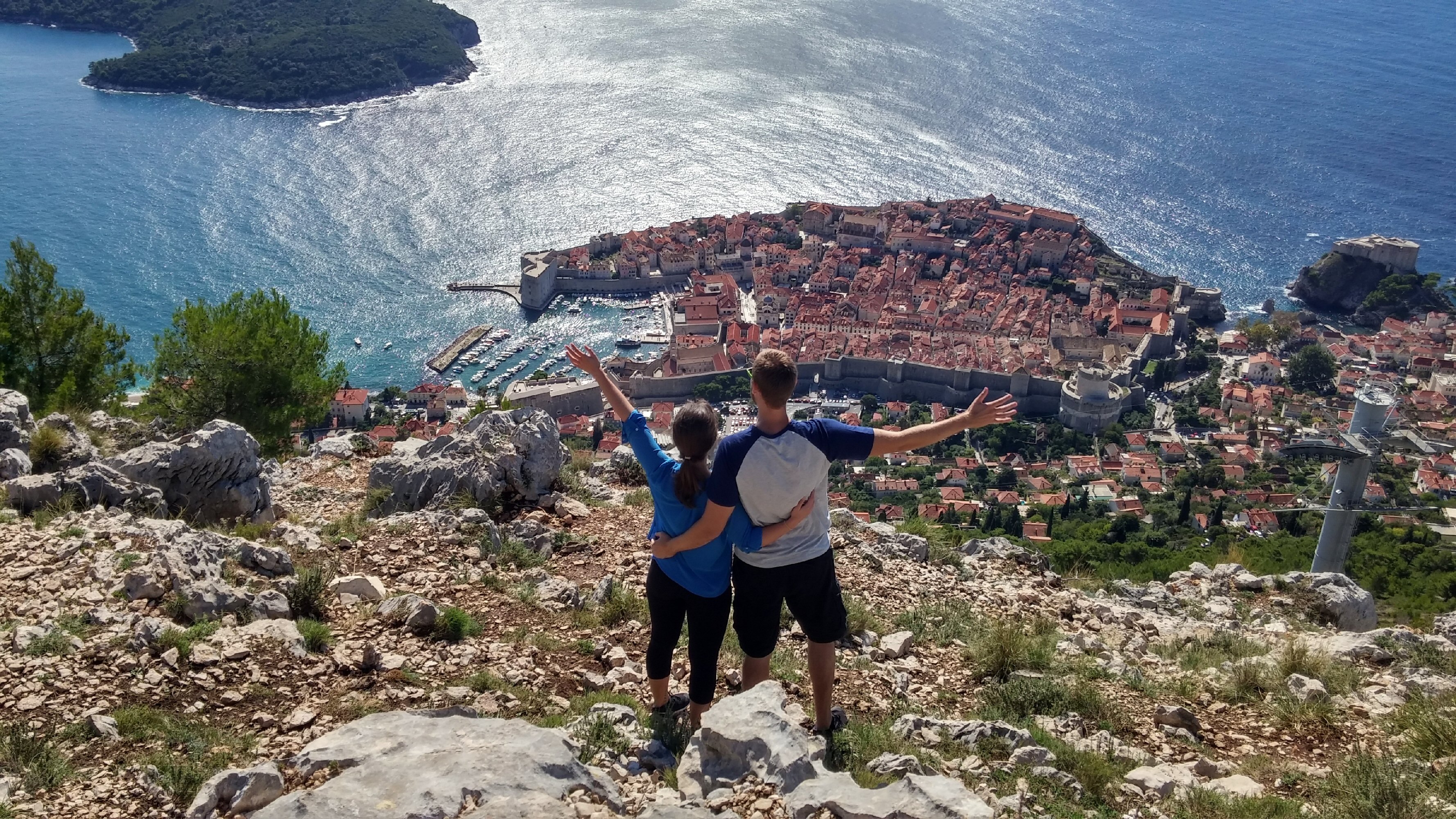
by Sarah & Cooper | Jan 3, 2016 | Europe, Travel blogger destinations, Travel guides, Traveller tales and interviews
…11 top tips on how to travel the world, and all you need to know about tech, travel and clean underwear on the road! Discover more with world-explorers, Ryan and Dee
This past Christmas, Sarah and I decided to visit the coolest city on the Nordic block, Copenhagen. The Danish capital is a clean and dynamic metropolitan city infused with modern architecture, stunning palaces, narrow streets, canals and beautiful homes.
To make our Christmas experience in Copenhagen even more exciting and homely, we were joined by my young cousin, Ryan and his fiancée, Dee, who for the better part of 11 months have been travelling the world, bouncing from one country to the next, across South East Asia, America, Canada, Europe and the UK.
The last time Sarah and I were experimenting on how to travel the world in a similar capacity, we didn’t have the luxury of staying in an Airbnb, or utilising the over-abundance of apps and devices available to locate economical accommodation and flights, compare currencies, and more importantly, make the overall organisation of travel less stressful.
Over a few festive drinks, (at an Airbnb, of course), we had a chat to Ryan and Dee about all they had learned on the road, since packing up in Australia last January (2015).
Here’s the cream of what we learned from our pair of innovative, adventuring millennials.
How to travel the world – 11 top tips with Ryan and Dee
Underwear
The magic number of underwear to carry is 10! Yep, while this is an amusing piece of advice (which was passed onto them on Facebook by another world-explorer before they travelled), they’ve tried, tested and found it to be true. You can live in one pair of jeans for a week but this rule doesn’t apply to underwear, and this number keeps you going for a few days, even when it’s a challenge to get your washing done.
Accommodation
Over 90 per cent of their travels (and when friends have not been able to host), they’ve chosen to stay in an Airbnb – an accommodation brand name that, as travellers know well, has really come to the forefront of the industry over the past year or so. They say the quality, variety, location and price of accommodation Airbnb offers is incomparable. Two of their favourite Airbnb accommodations were in Iceland, and both offered experience as well as a roof over their heads.
One was an old van converted into a room with a double bed and a very warm heater. The scenery was exquisite, and they were positioned uniquely in front of snow-capped mountains with stunning views of the Icelandic wilderness. The other, a barn converted into comfortable accommodation set right in the middle of an Iceland horse farm. The host openly welcomed guests to feed and play with the beautiful animals, all included in the standard price of the listing.
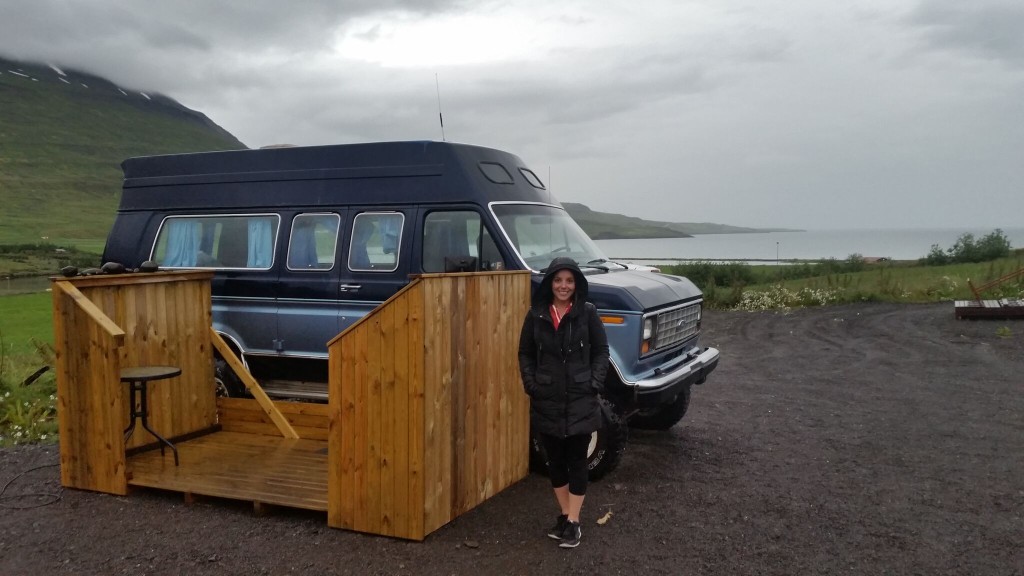
Airbnb is based on trust and reviews. Guests and hosts are both reviewed by one another. Treat the host’s home with the utmost respect, leave it clean (like you hopefully would your own space) and communicate openly and honestly. A bad review could prevent you being invited to stay with an Airbnb in the future.
Getting around
For booking the cheapest mode of transportation with the best rates they like Skyscanner, Google Flights and Rome 2 Rio.
Skyscanner – an airline comparison site featuring plenty of airlines around the world, some you probably have never heard of. Skyscanner brings them all together on one convenient space and allows you to compare based on the most important factor, price.
Google Flights – another airline comparison site with a very helpful, unique feature which allows you to view the prices of nearby cities of the region you are flying to. A slight variation in your journey can help you save hundreds, or maybe thousands of dollars off the cost of your next trip.
Rome2Rio – used to search for all types of transport; buses, trains, car rental and flights. Rome2Rio makes suggestions like flying from Dublin to Bristol then catching a bus to Cardiff which was three times cheaper than flying direct Dublin to Cardiff!
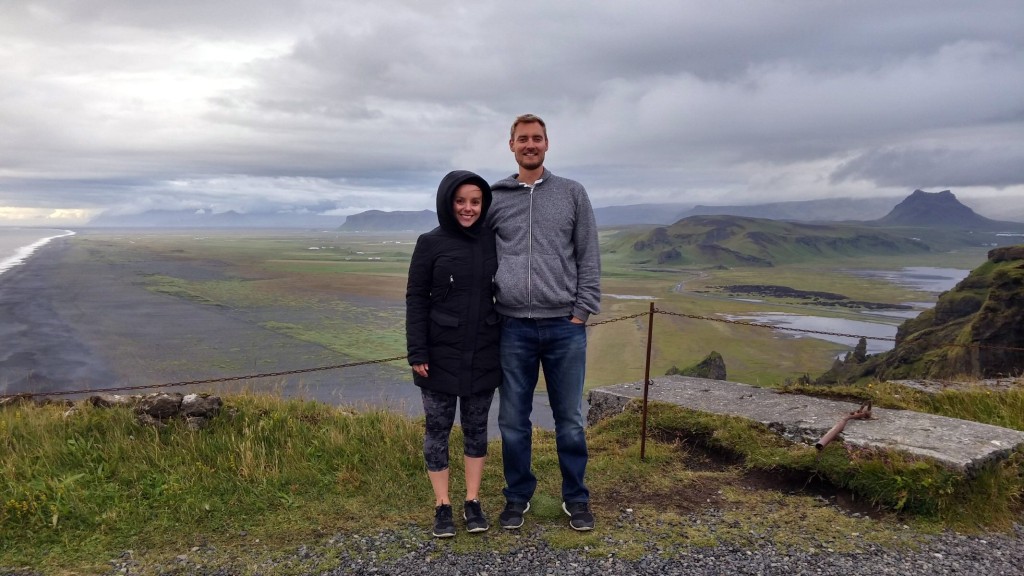
Communication and Technology
Before heading off on their grand adventure, Ryan and Dee chose to arm themselves with two different top-end smartphones (Samsung Galaxy S5 and LG G3). They decided on this route so that, for example, they could get a better response in situations where one phone’s WiFi works and the other doesn’t; the cameras work in different ways in varying situations.
Also, sometimes one phone will attract a better SIM card deal around the world than the other, or provide technical compatibility that another device cannot. All in all, this choice has helped with cost-efficiency, security, communication and image/video capture.
Cloud backup
Ryan and Dee will not live (or travel!) without access to cloud storage. At around $10 a month, they have unlimited Dropbox storage to safely backup everything – documents, photos, video – to the cloud. Their advice is to plan for all of your belongings to be stolen e.g. passports, visas, personal documents and photos – that’s worst case scenario. If you’re fine to access it via any computer in the world, then your worries are greatly alleviated.
Online security
Don’t get complacent about password-protecting your devices and software. They’ve had personal experience at being surprised about what thieves can gather out of the smallest bit of information that can be garnered from anything from your text messages to emails and logins. If it has the ability to be secured, lock it up!
On the other side of this, Dee and Ryan have found that it’s really easy to ping locations back to family using functions on apps like Google Hangouts, Viber and Whatsapp. This is a terrific idea, we think, because when you’re travelling around a country indefinitely and with no set plans, it’s important that someone at a home base has a good idea where you have been and where you are. This goes beyond just checking-in on Facebook!
Making friends on the road
Their top tip? Join a local pub crawl everywhere you go! This surprised me at first, but I realised it makes total sense, because mostly people joining in are fellow travellers and soon-to-be international friends. Also, don’t be afraid to go and talk to people when you are out, because let’s face it, most people are lovely once you get chatting. They have made a lot of friends joking about aeroplane legroom, suggesting ride-shares, and even asking locals on the streets for recommendations on what to do in their hometown.
Networking
It’s not just for business people! Start and maintain WhatsApp groups as you travel, and share photos with your new friends (but do this privately, out of courtesy).
Because Ryan and Dee have cleverly stayed in touch on Whatsapp (and also Facebook), they’ve been invited to stay in exotic places around the globe. Their new friends love seeing them again, and are proud to showcase their homeland to this friendly pair of Aussies.
They have actually based travel destinations solely on catching up with new friends they have met on the road. One thing they are looking forward to most on returning home to Australia is having their international mates come and visit.
Packing
They reminded us to prioritise what you need, and organise important belongings into one bag; that is, toiletries, clothes for the day or week. Keep your most-needed belongings at the top. Also, they split their belongings so that if a bag was to go missing, they both still have some clothes and essentials to share. Pack light, you do not need to travel with five pairs of jeans.
Over the past year, the contents of their bags has completely changed – from singlets and shorts in South East Asia, to warm coats and jeans in Europe. Remember, it’s better to pack light than regretfully over-pack it. If you desperately need something in particular, never fear, if you can purchase it during your travels.
Staying in touch
Dee and Ryan use Facebook to search for people who live in places they are planning to visit, and have found it to be a really easy way to find friends who are either there when they’re visiting, or friends who have just been and who can share travel tips.
Favourite apps
After all this talk about tech, what are their must-have apps (aside from Airbnb, Whatsapp and Dropbox, as mentioned above) for on the road?
1. Google Maps – Ryan and Dee use this app religiously as it provides detailed information about an area, as well as specific directions from one location to another. Important when trying to find an Airbnb in an unfamiliar city. Thankfully the app also offers aerial and street views of properties. How many arguments do you think this prevents!
2. Maps.Me – the offline equivalent of Google Maps. Although nowhere near as many features, it will still get you back to your accommodation in a pinch. Country maps are downloaded while on a WiFi connection, to be used later while offline.
3. XE Currency – allows comparison and conversion of currencies on-the-go. They found this helpful particularly when purchasing groceries, souvenirs and the odd beverage, and is critical when you’re sticking to a budget.
4. Uber – connects drivers with passengers directly, unlike hailing a taxi or booking through a centralised service. The pair find Uber to be significantly more economical than a taxi. Also, the app tells you how many cars are in your area, and the cheapest, fastest route to a destination.
5. Tripomatic – allows users to choose attractions they want to see and creates a day-by-day itinerary for any journey. Travel books are too heavy to carry, this app is the perfect replacement.
Sarah and I collected magnets of our favourite destinations around the world. Ryan and Dee’s tradition is a little more physical – they take photos of themselves doing handstands in front of iconic landmarks and buildings!
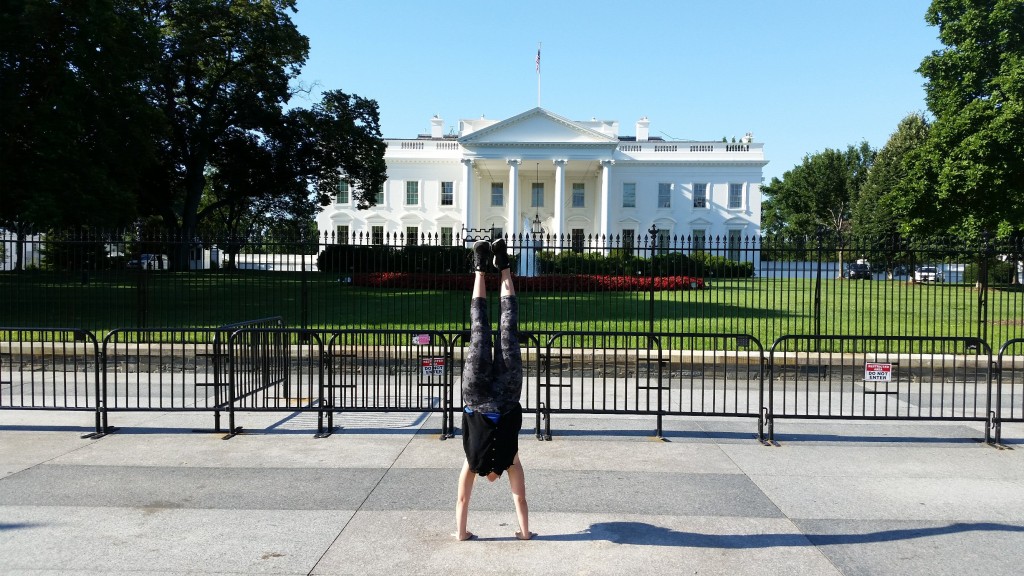
If you’ve found this helpful, have a tip or story to share, please let us know in the comments below.
Read about our Christmas in Copenhagen here


















 Four years ago (2012), after being retired for six years, and at the age of sixty eight, I looked up the U3A (University of the Third Age) website to see what courses were on offer, and to my delight, ‘Learning Spanish’ was one of them, so I decided to enrol.
Four years ago (2012), after being retired for six years, and at the age of sixty eight, I looked up the U3A (University of the Third Age) website to see what courses were on offer, and to my delight, ‘Learning Spanish’ was one of them, so I decided to enrol.
 I would highly recommend to anyone considering learning a second language, to go for it. It really gives you quite a boost when you see that you are capable of doing it.
I would highly recommend to anyone considering learning a second language, to go for it. It really gives you quite a boost when you see that you are capable of doing it.



